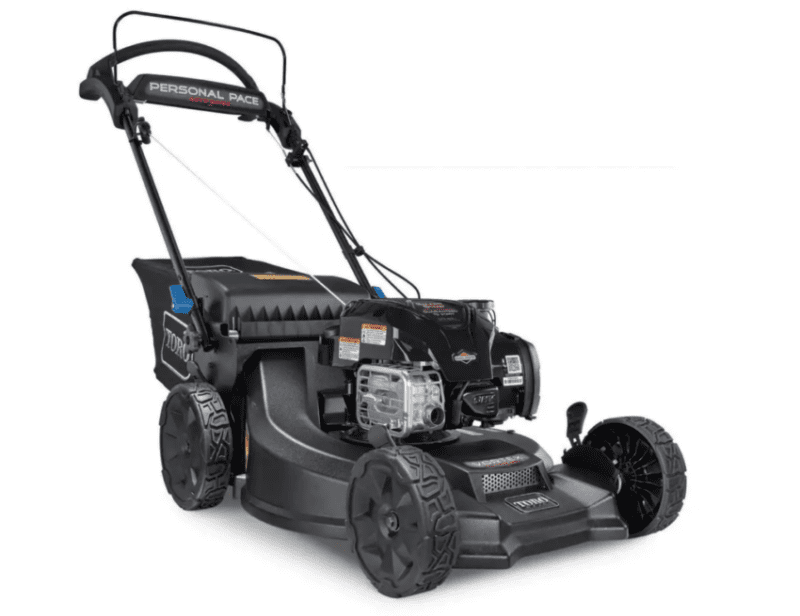Mulching and bagging are both valid methods of handling grass clippings. Both have their advantages and disadvantages, so your chosen method depends on your personal preference, as well as the goals you have for your lawn’s health. In this article, you’ll learn the differences between mulching and bagging so you can decide which one would benefit your lawn the most.
Understanding Mulching Grass and Bagging Grass
What is Mulching Grass?
When you mow your lawn, the tops of grass blades that get sliced off are comprised of about 90% water. They also contain tons of nutrients, like nitrogen, that help your lawn thrive. Leaving them on your freshly mowed lawn helps them quickly decompose and redistribute those nutrients back into the soil.
Any type of mower will work if you plan on mulching your grass clippings. However, there are specialized mulching mowers that shred grass into tiny pieces to distribute them back onto the lawn.
What is Bagging Grass?
Bagging grass is also a popular method that many people prefer. As the name suggests, bagging involves collecting your grass clippings into bags after cutting your grass.
This results in a neater lawn that enhances your curb appeal, however, you also miss out on the nutrient benefits that come with mulching your grass.
Comparing Mulching and Bagging: Which is Better?
Both mulching and bagging have their own pros and cons, so deciding which works best for you is a matter of personal preference. To help you decide, there are tons of factors to consider when choosing a method, with various impacts on your lawn’s health.
Benefits of Mulching vs Bagging
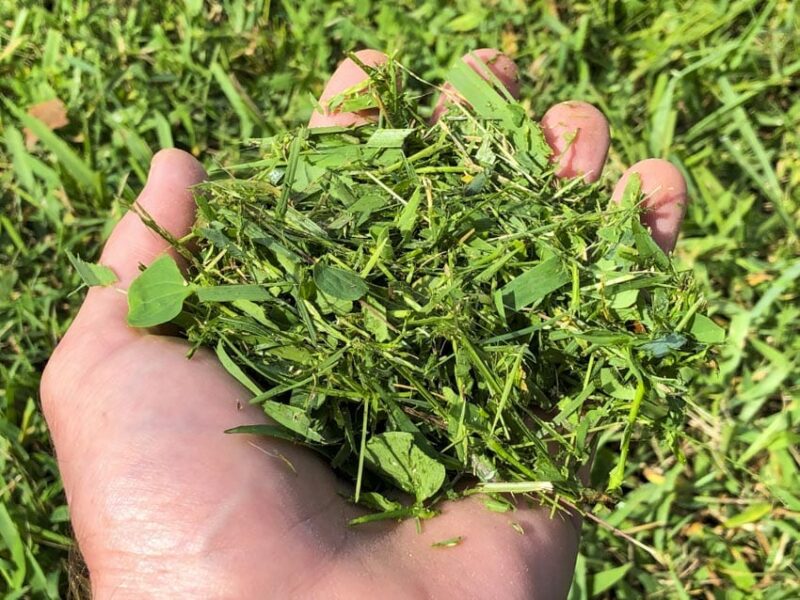
Easier Method
One of the biggest benefits of mulching your grass clippings is that it’s much less work— all you have to do is cut your grass. When bagging your clippings, there are several added steps, like emptying and cleaning the bag, raking or shoveling the clippings into piles and plastic bags, and finding ways to dispose of them.
Mulching, on the other hand, is a much easier method, and you can get back to enjoying the rest of your day when you’re done mowing.
Eco-friendly
A common practice for grass clipping disposal is through municipal waste programs, which could mean your clippings end up in a landfill. Organic waste in landfills is the third-largest contributor of methane gas in the atmosphere, so leaving grass clippings on your lawn makes more sense.
Without clippings providing nutrients to your grass and soil, you may be tempted to use synthetic fertilizers for your lawn. These fertilizers use by-products from the petroleum industry, which leads to even more waste and pollution. Moreover, it’s common for people to overfertilize and overwater their lawns, which can result in these chemicals leaching into nearby water sources.
Fertilizes Your Lawn
The fewer synthetic fertilizers you use on your grass, the better it is for the environment. When comparing mulching vs bagging, you should note that your lawn will require less added fertilizer if you mulch your clippings.
Mulched grass contains nitrogen, which, when mulched, quickly becomes available to your lawn. It’s almost like you’re fertilizing every time you mow.
Reduces Soil Erosion
Mulching your grass reduces the effects of soil erosion in several ways. For starters, mulched grass clippings retain moisture, letting your lawn absorb heavy rains more effectively.
Second, mulching reduces the effects of soil compaction, which contributes heavily to erosion in many homeowners’ yards.
Keeps Your Lawn Moist
It’s a common misconception that mulching your grass contributes to excess thatch buildup, but grass clippings are mostly made up of water and nitrogen. They tend to decompose quickly and absorb back into the soil.
However, being 90% water, grass clippings do contribute to your lawn’s moisture. This benefits the microorganisms in your soil, which help break down thatch.
Costs Less
Another reason to mulch instead of bagging your grass clippings is that there are extra costs that come with bagging. For equipment, you need to have a mower with a bagging attachment, replacement bags, and a leaf vacuum.
You may also run into extra costs to dispose of your grass clippings, and you need to purchase plastic bags for your yard waste. If you hire a lawn care service, it will also usually cost more for them to bag your clippings since it takes longer and requires more work.
Benefits of Bagging vs Mulching
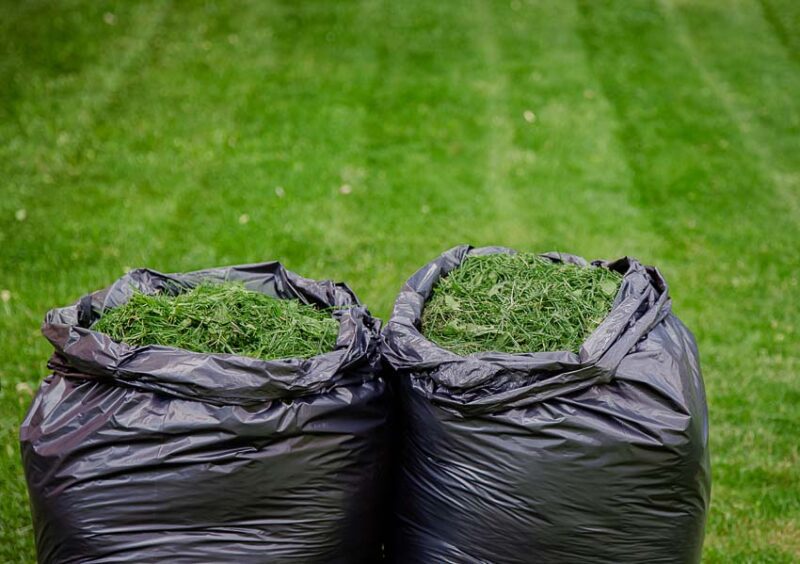
Choosing to bag your clipping poses some advantages for those who have certain lawn care goals in mind. Some of the benefits of bagging can be found below.
Composting Material
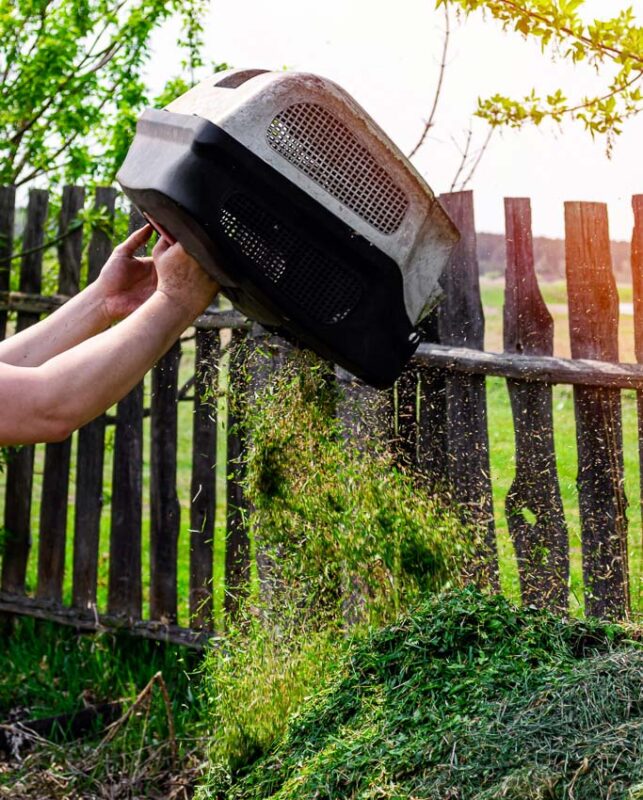
Grass mulch makes great composting material, and you can use your bagged clippings to enrich your pile.
Beyond that, grass clippings are high in nitrogen, which helps speed up decomposition. They also provide moisture to keep your compost hydrated.
Not as Messy
Some homeowners prefer a neater look as opposed to the mess that mulching mowers can leave behind. If you let your grass grow too long, it can look even less neat since you’re more likely to leave lumps of grass behind on your lawn.
When you bag your clippings, you don’t have to worry as much about your grass length, since you’re already going to handle the mess when you bag or rake it.
Better Curb Appeal
If you appreciate a tidy, well-kept lawn, spending the extra time and effort to bag your clippings could be preferable to mulching.
Fewer Pests and Diseases
Yard debris can attract pests and diseases. Even small amounts of yard waste, like clippings, can harbor insects and fungi. If your lawn suffers from disease in one part, it can also easily spread to other parts when you mulch your grass.
Fewer Weeds
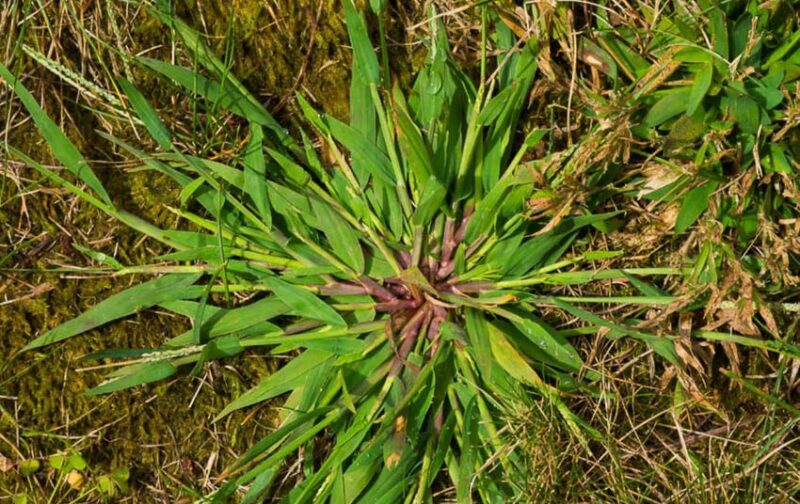
Weeds like dandelions, clover, plantain, and crabgrass can thrive when you mulch your clippings since their seeds could spread all over your yard. Bagging your clippings prevents this from happening, resulting in fewer weeds.
Fewer Allergens
Freshly mowed grass may smell great to some people, but it’s also a common allergy trigger for those with allergies. Bagging your grass can help cut down on pollen and other allergens, which can help you enjoy the outdoors more if you’re a seasonal sniffler.
Mulching vs Bagging: Factors to Consider
Still not sure which method is best for you? Here are some of the main factors to consider to try to settle the debate.
Extra Steps
Mulching your grass clipping requires virtually zero extra work, however bagging requires several extra steps. You must attach your bagging equipment, clean out your bag when you’re done mowing, and dispose of your grass clippings.
It’s estimated that bagging grass can add around 40% more to the time it takes to mow your lawn compared to mulching your clippings. For this reason, professional landscapers usually charge extra to bag your clippings.
Curb Appeal
There’s no denying that a lawn looks neater and more put-together when you bag and dispose of your grass clippings. For many, the effort is worth the final product.
Wet Lawns
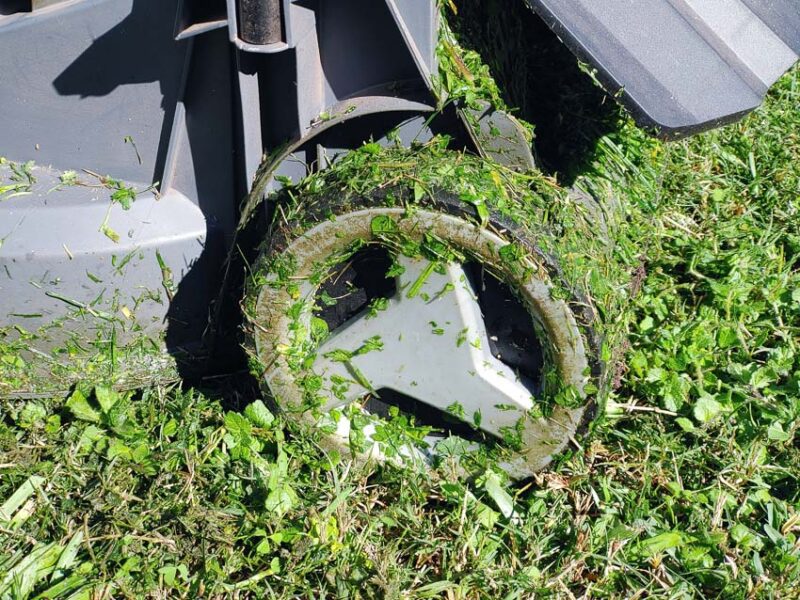
Contrary to popular opinion, you can mow your lawn when it’s wet. In fact, during certain times of the year, it’s almost impossible to avoid, between the morning dew and afternoon rain.
If you live in a wet region, bagging and mulching will require some extra help. Bagging wet clippings can clog your bagging attachment and be extremely hard to clean.
However, mulching wet grass isn’t the most fun thing in the world, either. It can leave behind sticky clumps of grass that can harbor moisture and cause problems if they’re not removed.
How to Decide Between Mulching vs Bagging
With so many pros and cons for both methods, the ultimate decision to mulch or bag your lawn comes down to preferences like lawn health and how you use your lawn. It can help to identify your goals and preferences to determine the method that works best for you.
Lawn Health Assessment
You can complete a thorough lawn health assessment to determine whether to mulch or bag your grass clippings. To conduct this assessment, start by testing your soil to make informed decisions about which soil amendments to add to improve your lawn’s health.
After this, test the thatch levels by using a shovel to cut a cross-section of your lawn. If you see more than a half-inch of buildup, it’s time to dethatch your lawn.
Next, use a screwdriver to probe your soil. If it doesn’t push in easily, then you have compacted soil. This can be alleviated by aerating your lawn. Most people only need to do this once per year at most.
Finally, walk around your yard and take notes of any problem areas that you identify on the surface level.
Considering Lawn Usage
Do you use your lawn for recreation, like hosting parties and playing with your kids or pets? If so, mulching is probably your best bet, since it results in a healthier, more resilient lawn.
If your lawn is mostly for aesthetic purposes, bagging your grass clippings is a better choice to maximize neatness and reduce the chances of disease.
Identifying Your Goals
Lush, green lawns don’t just happen by accident. Having a lawn your neighbors are envious of requires care, planning, and maintenance. Homeowners with beautiful lawns take the time to identify their goals and develop regular watering, weed-control, mowing, and fertilizing schedules.
How to Implement Mulching or Bagging
Whether you mulch or bag your grass clippings, the following techniques will yield the best results.
Mulching Grass
You can use any type of lawn mower to mulch your grass clippings, but a mower made specifically for mulching will do a much better job. You should also keep to a regular mowing schedule to avoid the annoyances of long grass clippings.
Another aspect to note is the sharpness of your mower blades. The sharper they are, the cleaner the cut, which reduces the risk of spreading lawn diseases.
Bagging Grass
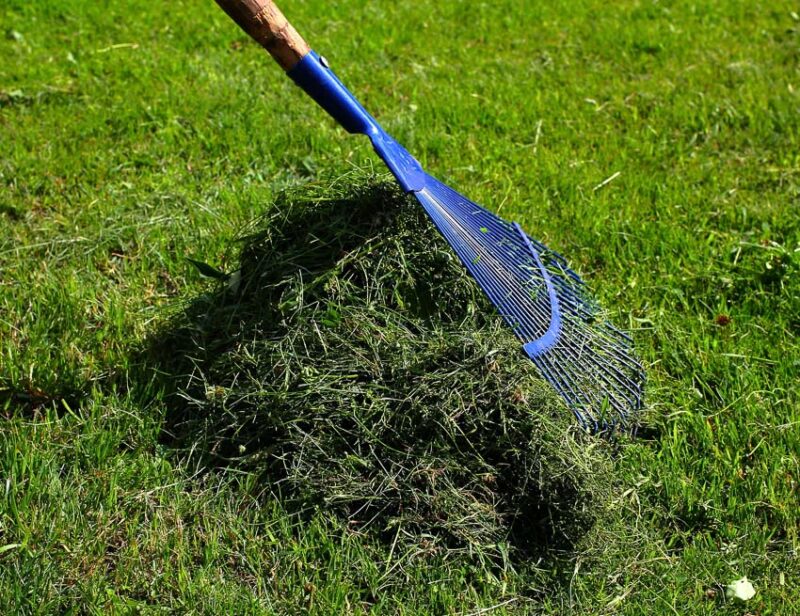
There are two methods for bagging your grass clippings. You can either use a regular lawn mower and rake your clippings into piles, or you can use a mower with a bagging attachment. If you go the latter route, you’ll save yourself a lot of work.
No matter which method of disposal you choose, you need to find one that works best for you. Some people prefer the eco-friendliness of composting to dispose of yard waste, but you can also contact yard trimming drop-off sites and removal services in your area.
FAQ: Common Questions About Mulching vs Bagging Grass
Will mulching contribute to thatch buildup?
While a common misconception is that mulching contributes to thatch buildup, it’s not true. Grass clippings are made up of around 90% water, and they degenerate quickly once they are dispersed in your yard. Excess thatch occurs when there aren’t enough healthy microbes in your soil to break down organic matter at the root zone.
Can I mulch grass if my lawn is full of weeds?
If your lawn has a weed problem, mulching may not be the best solution. When you mulch your grass clippings, you may increase the germination rate of the weed seeds, spreading them throughout your lawn. It’s better to bag your clippings in the spring and apply an organic pre-emergent to cut down on weed growth.
Does mulching attract pests?
While a few pests can actually signal a healthy lawn, too many pests can cause annoyance and damage to your lawn. Mulching your grass clippings can contribute to lawn moisture and temperature, which may create a favorable environment for certain pests. If you notice any signs of insect infestations or fungus, you should try to bag your clippings until the problem is under control.
Will bagging clippings remove all the nutrients from my lawn?
While grass clippings can provide your lawn with valuable nutrients, bagging your clippings does not deprive your lawn of nourishment. Most people put their lawns on a regular fertilizer schedule, but you can reduce the need to add fertilizer by mulching your clippings.
Can I switch between mulching and bagging throughout the year?
You can (and should) switch between mulching and bagging throughout the year. Even if you’re used to bagging your clippings, experts recommend removing your bagging equipment from your mower during wet seasons and in the fall to mulch fallen leaves.


